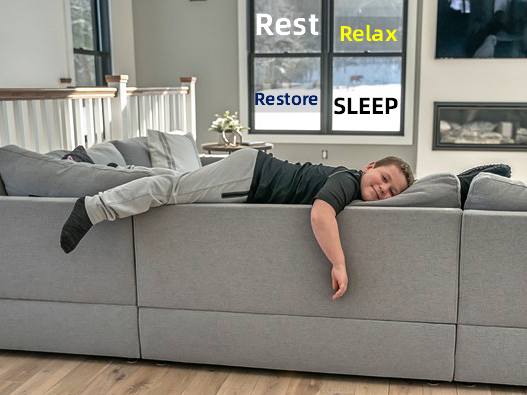How to Fix Poor Posture at Work?
Are you experiencing a backache?
You often wonder what you are doing wrong that is causing the pain. You wish you could go and get your neck massaged as it is very stiff. Don’t know how to avoid it since your job requires 10-12 hours of sitting in front of your computer screen.
You are not alone who is facing these dilemmas. Do you know that about 44 million workers in the European Union have musculoskeletal disorders caused by their workplace?
A study by a Medical Journal, The Lancet, published in 2012, found that musculoskeletal conditions were the second greatest cause of disability in the world. Thus, affecting over 1.7 billion people worldwide.
6 Main reasons for a poor posture at work:
- Sitting in office chairs all-day
- Hunched down over your phone for hours
- Staring at your computer
- Carrying a heavy bag over the same shoulder for a longer period
- Prolonged standing
- Driving long hours
Do you know that most of the corporate workers who are glaring into their computers all day suffer from a poor posture leading to a hunched back? Poor posture leads to the third most common reason for visits to the doctor’s clinic, back pain. Singapore Workplace Safety and Health (WSH) Institute conducted a survey in 2008. They estimated that work-related musculoskeletal disorders result in an economic loss of $3.5 billion a year to Singapore.
Health-related issues due to bad posture cause a lack of productivity. According to the American Chiropractic Association, back pain affects work productivity and disrupts everyday activities. About 31 million Americans experience low back pain at any given time.
Employees suffer injuries that mostly are workplace activities related to the world and professions. According to the Bureau of Labor Statistics, musculoskeletal disorders and injuries accounted for 31% of workplace injuries in 2015.
Yoga Pose with Steps to improve side effects of bad posture at work
How to Improve Poor Posture at Work
To enhance your well-being and prevent chronic health issues, it’s important to implement healthy workplace habits that improve posture at work from adjusting your work station to stretching throughout the day.
The following are ways to improve poor posture and ergonomics(to fit your work as per your body) especially for people sitting in an office chair for most of the day.
I) Practice Neutral Posture
Is it difficult to sit up straight at your chair? Neutral posture can help you align your spine keeping it completely straight from head to toe.
Slouching and hunching of the back can cause spinal compression, nerve pinching, and muscle tension.
This could be difficult for those who have a stiff back and for those who slouch sub-consciously.
However, you can achieve a neutral posture at work while seated at your desk with a little practice and patience. Follow the tips mentioned below to improve poor posture while sitting.
- Always keep your computer at eye level so that your head doesn’t tilt downwards. This puts pressure on your neck and shoulders.
- Pull your shoulders back and keep your back flat against the chair. Do not lean forward as it leads to hunching.
- Rest your feet flat on the ground. Uncross your ankles and legs. This can put a strain on your alignment.
- Use a support tool such as a cushioned ergonomic chair to help keep your upper back straight and prevent you from slouching.
II) Keep your Monitor at Eye Level
You don’t want to be straining your neck up and down all the time while looking at the computer screen. If you are using a laptop, you can elevate it by placing it under a stack of hardcover books or you can use a laptop stand easily available in the markets.
III) Sit up Straight with your Shoulders and Hips aligned with your Ears
Your ears, shoulders, and hips should all be in a straight line. The moment you feel one is out of its position, try to align it back while sitting at your desk.
Those with hunching and slouching problems will find it difficult to bring it all in a straight line. You might feel some discomfort but once you get used to it, your back will be straight and pain-free.
IV) Adjust your Chair and Keyboard height
To keep stretching your arms up and down to type can have an adverse effect on your posture. To improve poor posture at your desk, raise or lower your chair according to your height and comfort. Also, make sure your forearms are at the same height as your keyboard when you are typing. Form a 90-degree angle with your elbows, this will avoid any strain on your forearms.
Most office chairs have a lever underneath them that you can use to adjust their height. By all means, use an Ergonomic chair whether at work or at home for those who work from home.

V) Use Ergonomic office products
One of the most important and necessary products to improve poor posture at your workplace is the right office chair. The office should invest in ergonomic office products for the well-being of their workers and to due workplace injuries.
The market is flooded with ergonomic office products such as adjustable office chairs with lumbar support and built-in headrests for better spine alignment, office footrests, monitor arms, keyboard trays and cushioned mousepads.
The recent discovery growing in popularity is the use of a stand- up desk, an adjustable desk that switches from sitting to standing.
A study found that workers who used the stand-up desk reduced their sitting time by an hour per day. Thus, a whopping 54% had a decrease in the upper back and neck pain and also had improved mood changes.
VI) Keep your Feet Flat
Keep your feet comfortably flat on the ground to improve poor posture. If you find it difficult to keep them flat, then, put a footrest under your desk and keep your feet on it while you’re working. However, do not cross your legs or ankles while sitting at your desk, a bad habit you need to change and improve on. This can have side effects on your posture leading to back pain.
VII) Keep your workstation organized
Move all your work essentials and stationaries like pens, pencils, staplers, sticky notes, necessary paperwork, computer mouse and other items that you use frequently, within your reach.
You should be able to grab your office essentials easily when needed instead of stretching and causing unnecessary stress on your muscles This could lead to poor posture.

IX) Avoid holding your phone between your ear and neck
Office workers use their phones a lot for obvious reasons but it is in the way they use it that leads to poor posture. They hold the phone between their ear and neck which is a big no-no. Because this causes perpetual strain on your neck leading to spondylitis.
Instead, use a hands-free option like a headset, speakerphone or a Bluetooth device or even better – use your hands to hold the phone to your ear to avoid a poor posture.
X) Set Reminders for Short-breaks
The biggest and most crucial reason for back pain at work is because we limit our movements. We are so tied down with works that we forget how many hours we have been sitting and not moved an inch.
We limit the amount of movement required for better health by sitting for most of the day whether at the desk or a journey back home in the desired transportation. Most of our days just go by sitting.
Recent research has found that regular breaks of 30-minutes reduce the health risks posed by sitting. Regular movement breaks have also decreased lower back pain in many workers.

Set reminders using time tools either in your phone or a timer or desktop apps to take short breaks. This can cultivate healthy habits to improve poor posture.
To reduce the health risks of sedentary work, take scheduled breaks and perform good posture exercises throughout the day. Such as stretching your back, arms, neck from side to side, to avoid any stiffness, soreness, and aches. A brisk walk around the room during your breaks and lunches can also help boost circulation and energy.
XII) Stretching Exercises at Work
Practice sitting and standing stretches at your desk every 30 minutes. Alternate the exercise whenever you can. When you stand at your desk to stretch, make sure you stretch for at least 2 whole minutes to be able to reap the benefits from it.
Stretching your back and neck muscles will realign your posture and ease any pain you experience.

Some sitting and standing stretches you can try at your desk are:
Chin rotations –
Keep your chin parallel to the floor and slowly rotate your neck from left to right at least 10 times.
Chin tucks –
- While sitting up straight at your desk, pull your chin in and slowly drop it down towards your chest.
- Hold this position for a couple of seconds, and then, release your chin.
- Repeat this exercise 10 times.
Shoulder blade pinches –
- Sit or stand in a straight posture.
- Place your arms in a “W” position – arms at the side with your elbows bent up.
- Pull your elbows back so your shoulder blades pinch together.
- Then, hold it for a count of three. It is almost like doing a push-up standing.
- Repeat this exercise at least 10 times.
Shoulder blade stretches –
- While standing, place your hands together behind your back so your palms are facing away from you.
- Then, slowly lift your arms up as high as they can comfortably go and hold them there for several seconds.
Arms stretch –
- Stand with your hands at your sides and your palms facing out.
- Then, slowly stretch your arms out and bring them together above your head.
- Stretch as much as you can and hold it for few seconds.
Chest stretches –
- Place your right hand on a wall and slowly rotate your body without moving your hand.
- Once you can’t stretch any further, let go of the wall and then, try again with your left hand.
Isometric low row exercise –
- Sit in a comfortable chair and bend your arms so that your fingers are facing forward and your palms are parallel to each other.
- Exhale as you move your elbows back into the chair behind you and squeeze your shoulder blades together.
- Then, hold this position for 10 seconds and breathe deeply.
- Soon after, as you inhale, release and go back to the starting point.
- Repeat this exercise for a minute.
- Also, practice this exercise several times during the day.

11 Yoga poses to improve Poor Posture
You will be surprised but you can also try your hand at yoga poses at work. During your breaks, find a quiet spot and practice some of the yoga poses that decrease back and neck pain. However, make sure that you do not practice right before or after your lunch or evening snack. This can lead to more added health risks.
We all know that yoga is known to cure most of the health-related issues. Yoga will not only eliminate your aches and pain but it will help you to calm your nerves down especially when you are under stress at work.
11 Yoga poses to attain good posture at:
- Mountain Pose
- Tree Pose
- Standing Forward Bend Pose
- Seat Forward Bend Pose
- Downward Facing Dog Pose
- Warrior Pose
- Cobra Pose
- Bow Pose
- Bridge Pose
- Cow face arms Pose
- Camel Pose
Standing Forward Bend – Steps Variations and Benefits
Conclusion
So, is your posture good or bad? If you are experiencing any kind of pain, do not neglect it. Follow the above tips and exercise to correct your poor posture. However, in severe cases, visit a chiropractor and let the doctor help you with your treatment.
Therefore, it is very important to practice good posture at work and at home. For all those workaholics, do not take your health for granted. Stop, pause and look around for a moment. Take a break and breathe in deeply.
Work is important but not at the cost of your health. Practice good posture habits not only at the office but at home and anywhere you travel. Maintaining a good healthy spine, back and neck can prevent and avoid long term exhausting and crippling health conditions.

Be grateful for the life and health you have and let not stress take over your happiness.
Be happy, healthy and safe!








